I have a VCSEL packaged in a TO-46 can (image here / datasheet with package dimensions). I need to remove the glass top – with or without the silver-coloured cylinder – without damaging the laser diode itself or any electrical contacts within the package. What would be the best method to achieve this?
Asked
Active
Viewed 208 times
0
-
1Most likely magic. Do you have many to experiment? – PlasmaHH Jul 25 '17 at 13:15
-
If you mean equipment, I have most standard lab tools and a microscope available. If you mean magic, I'm afraid I do not. – hryghr Jul 25 '17 at 13:26
-
I meant many of those diodes. I personally would try chopping up the can with a mill or so. But only if I see a reason to do so, which here I do not ;) – PlasmaHH Jul 25 '17 at 13:29
-
I only have one piece to experiment on, I'd rather not touch the other. The reason is that I want to minimize any kind of optical feedback into the active region and chopping it up is arguably a little extreme of a measure. – hryghr Jul 25 '17 at 13:35
-
I've taken the top off broken ones. I think I used a Dremel tool with the thin grinding wheel. I took it off near where the silver can meets the gold colored base. – George Herold Jul 25 '17 at 13:59
-
Hi op, I smell a bit of an [XY problem cooking up](http://xyproblem.info). Can you explain *why* you want to do this? – Marcus Müller Jul 25 '17 at 14:11
-
So you want to minimize the crosstalk, to improve the contrast? – analogsystemsrf Jul 25 '17 at 14:56
-
Basically I want to see whether the so called polarization switching occurs if I minimize the optical feedback into the VCSEL. The slightest feedback can change the polarization dynamics drastically, according to several papers I have read. – hryghr Jul 25 '17 at 21:53
-
Polarization switching (and other kinds of mode hops) is highly feedback-dependent...but the glass lid is probably AR coated and/or angled to minimize the feedback it produces (assuming the device is meant to be used in applications where hops would be a problem). The optics you use to couple the laser output to a fiber or detector are equally or more likely to be causing a problem. – The Photon Jul 25 '17 at 21:57
-
As far as I know, the VCSEL has no "internal" polarization stabilizing mechanism, therefore I doubt they put in any more effort to avoid switching. Of course my hopes that switching would occur by increasing the current (after the disassembly) are not too high, but I want to give it a go. I do not couple the output to fiber as of now, the light directly reaches a PBS cube (I know I should collimate it first), then lensed photodiodes detect it in both directions. – hryghr Jul 25 '17 at 22:03
1 Answers
3
I have not used it, but Thor Labs sells a tool for exactly this purpose.
It supposedly works for cans with diameters between 2 and 24 mm.
Note that for a VCSEL there is no "rear facet", so the feedback to the monitor photodiode may depend on a reflection off the can's window. If you remove the can, it may no longer possible to use the photodiode to maintain constant power operation.
The Photon
- 126,425
- 3
- 159
- 304
-
I must have missed this one, since I frequently browse their site. The photodiode is not of much interest as for now, but thank you for pointing it out. – hryghr Jul 25 '17 at 21:52
